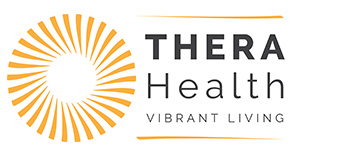Given the vast and growing body of scientific research proving the many health benefits of omega-3 fatty acids, we know that omega-3 is important in the diet.
Getting your omega-3 from Fish Oil is safe but some fish oil is purer than others – not to mention fresher, better tasting and sourced with greater respect for the environment. But how can we know that we are buying a high quality, fresh fish oil supplement?
“ Don’t fall prey to marketing language – be it from the supplier or the manufacturer. ”
Follow these guidelines to get to the basics:
1. Third Party Analysis = Proof
There is one simple way for you to be confident that the product you are buying will provide the health benefits you are looking for and deliver the quality markers discussed above: third party testing. Any responsible fish oil manufacturer will commission an independent testing organisation who does not benefit financially from the test results to test their product.
The test results should be listed on the company website or made available to you by email even if the company is not manufacturing the oil themselves. Sometimes you will find test results on public websites like www.ifosprogram.com. By comparing the test results for purity and freshness levels from different brands, you can differentiate lower quality from higher quality fish oil, thereby ensuring safety and efficacy.
Though all food substances, including fish oil, could contain some level of these contaminants, look for brands that test to very refined levels and find no detectable levels when tested at 10 ppb for mercury and lead and .5 ppt for PCBs and dioxins.
In addition, raw material should be:
- Harvested from healthy and abundant waters
- Processed to eliminate environmental contaminants, and
- Third-party tested to ensure that the finished product exceeds international pharmaceutical standards.
Some internationally-accepted quality standards include: CRN (Council for Responsible Nutrition), WHO (World Health Organization) and IFOS (International Fish Oil Standards). It is important to note that some heat is required to extract the oil from a fish and to remove environmental contaminants. Despite what is being said in the market, fish oil must go through a cleansing process that uses heat. This can easily be done using low heat without injury to the oil. A method such as molecular distillation is effective for ensuring purity levels. Look for a product that well exceeds the established limits.
2. Freshness = Efficacy
Exceptional freshness levels are absolutely essential and ensure product integrity and biological efficacy. Oxidised (rancid) oil is not healthy for the body, and is the cause of the fishy smell, taste and burps that many people have experienced with fish oil. Companies have been known to try to mask smell by using flavouring, so check for third party test results for peroxide levels (current oxidation) and anisidine values (past oxidation).
Freshness is measured by anisidine and peroxide values, which combine for a TOTOX or total oxidation value. Look for a TOTOX value of less than 26.0 meq/kg — the lower the number the fresher the fish oil. This value is put forth by CRN, IFOS and GOED. A quality product from a reputable company should come in well below these limits.
3. Manufacturing Methods
Look for processing methods that do not include the presence of oxygen, excessive heat or chemicals. Processing the oil in a nitrogen environment and without oxygen will prevent oxidative rancidity. Mild heat is necessary, and as long as there is no oxygen present, heat does not pose a threat.
4. Science = Evidence
Nordic Naturals is a research leader in demonstrated product efficacy. Nordic Naturals fish oils are regularly chosen by leading research institutions and universities such as Harvard University, Columbia University, National Institutes of Health (NIH), Stanford University, Duke University, UCLA, and the Cedars-Sinai Medical Center for their independent research.
With 30 published studies, including 18 clinical studies, and more than 30 in progress, Nordic Naturals is the brand of choice for omega-3 research worldwide.
5. Dosage
Dosage is key with fish oil, so read the supplement facts panel on the product. For general maintenance, a daily dose would average about 500 mg of EPA and DHA. This can often be accomplished with one soft gel or 1/4 tsp of a high quality concentrated fish body oil or ½ tsp of cod liver oil.
Products containing a lower concentration of EPA and DHA mean that you have to take more soft gels to get the required amount of EPA and DHA. That’s why a less expensive bottle does not necessarily mean a good bargain! You must read the label.
6. Great Taste!
Compliance = Results. And great taste is important to ensure compliance. Exceptional freshness will ensure good taste. And be sure to choose a supplement with only natural flavourings and preservatives.
7. Sustainable Fishing is Imperative
Purchase from a reputable company that has an excellent track record for:
- Environmental sustainability with regards to fishing practices
- A strong corporate/social responsibility profile
- Community involvement
- Respect from the medical and health professional community
8. Every Step Counts
Since most packaging does not give the whole “fish” story, go to the website or call the customer service department to fill in the blanks. A quality company will go out of their way to make sure you have this information about their source of raw materials, transportation time from catch to processing and manufacturing process. Vertically integrated from catch to finished product, Nordic Naturals delivers the freshest Omega 3 oils.
The process from “BOAT to BOTTLE” is what makes Nordic Naturals fish oils unique and efficacious, besides their industry-best practices for sustainable fishing.






